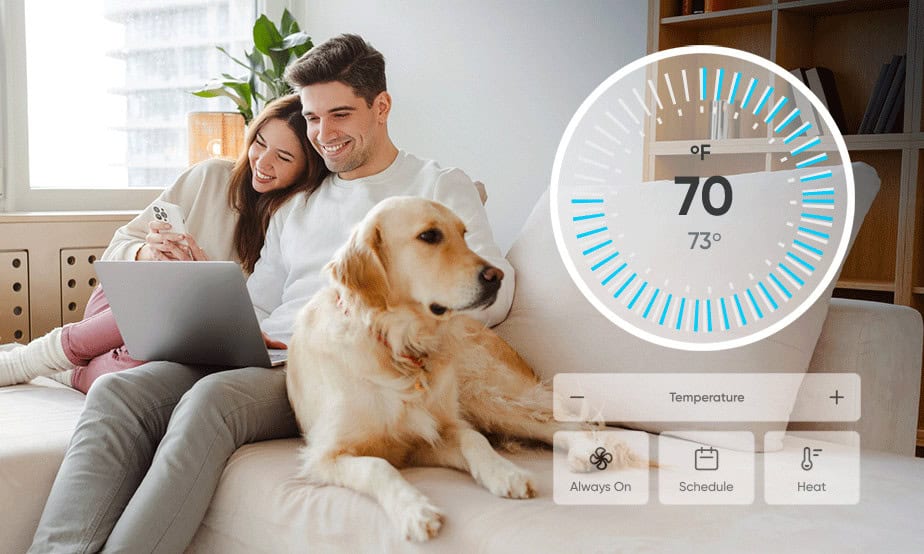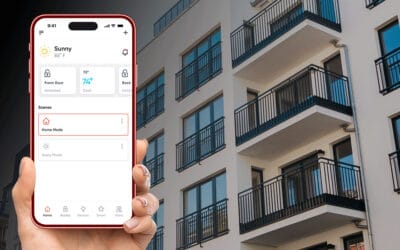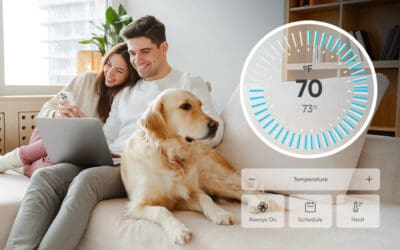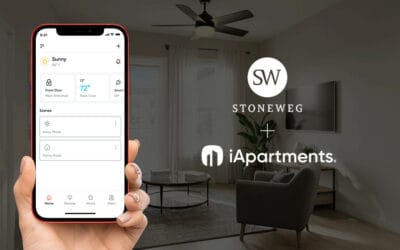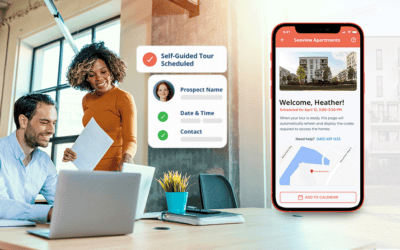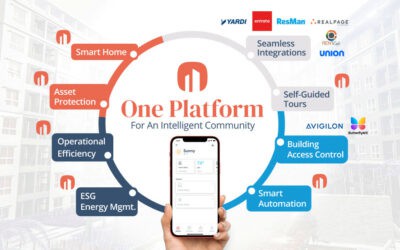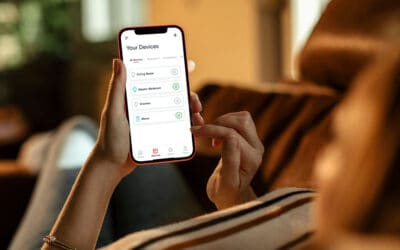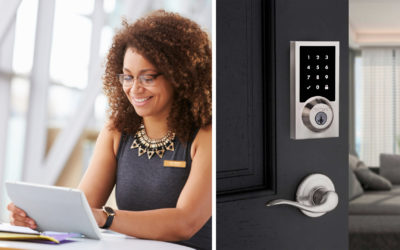Centralization in property management streamlines operations by consolidating tasks like leasing, maintenance, and access control into a unified system, improving efficiency and oversight.
However, while automation enhances security, reduces costs, and simplifies workflows, maintaining a human touch is essential for resident satisfaction and community engagement. The key is finding the right balance.
Centralization: The Goal is to Enhance not Replace
Centralizing the right mix of automated processes alongside personalized service can enhance operational efficiency while preserving the core of property management—building and maintaining strong relationships with residents.
Here’s how upper-level property management professionals can thoughtfully integrate automation while retaining a human touch, thereby optimizing both asset performance and resident experience.
Centralization: The Role of Automation
Automation technology in property management, especially smart tech platforms like iApartments, has revolutionized routine processes. Systems that connect smart home technology, building access, and self-guided tours into a single application have simplified daily operations, allowing staff to focus on high-value interactions. Automated systems have substantial benefits in multifamily property management, especially in asset preservation and operational efficiency.
Reduce costs with automation
- Preventive Maintenance: Automated alerts for maintenance issues allow for a proactive approach, addressing problems early and preserving asset integrity.
- Energy Efficiency: Smart sensors can monitor and adjust heating, cooling, and lighting, reducing energy waste and improving sustainability.
- Routine Communications: Regular reminders, notifications for inspections, and maintenance schedules can be automated, freeing up property managers for other tasks.
Compared to the cost of break ground or knock down walls for typical amenities, smart home tech creates a 6-10X Multiple on Invested Capital.
Enhancing Leasing Processes with Automation
Leasing is another area ripe for automation. By automating repetitive tasks and providing real-time information, leasing agents can focus more on engaging with prospects and closing leases.
Automation can support leasing in several ways:
- Scheduling and Self-Guided Tours: Self-touring technology lets prospective renters view units at their convenience, significantly enhancing their experience. Automation of tour schedules, access to buildings and vacant units, and prompting prospects to complete an application eliminates manual tasks.
- Onboarding: When a prospect signs a lease, automated updates to smart lock credentials remove the need for physical keys and manual intervention from staff, ensuring that residents have instant, secure access upon move-in.
- Data Collection and Follow-Up: Automation collects essential data from tours and applications, allowing leasing agents to tailor follow-up conversations and more effectively close leases. By automatically delivering prospect data to leasing teams, agents can focus on the human aspect of leasing, such as addressing concerns and guiding prospects through the decision-making process.
Human Touch in Multifamily Management
While automation can enhance efficiency, certain aspects of property management still require a personal approach. Building relationships, resolving conflicts, and understanding residents’ unique needs are areas where human interaction is irreplaceable. Property management professionals bring empathy, flexibility, and negotiation skills to these situations—qualities that technology cannot replicate.
Human Touch Highlights:
- Resident Relations: Creating a welcoming community requires a human connection. Staff should be available to address questions, build rapport, and show that resident concerns are valued.
- Conflict Resolution: When disputes arise, having a skilled human mediator on-site ensures issues are handled with understanding and care, preventing escalations.
- Tenant Retention: Leasing agents and property managers who build positive relationships with residents contribute to higher retention rates and reduced turnover.
Centalization for Operational Efficiency
Centralization in multifamily property management isn’t solely about automation; it’s about streamlining processes so that essential information and operations are easily accessible to staff, residents, and prospects. Centralization provides accurate, real-time data, enabling teams to make informed decisions quickly. As repetitive, low-value tasks are reduced, staff can focus on value-added activities that enhance resident experience and property performance.
Strategic Benefits of Centralization:
- Improved Accuracy and Speed: Access to real-time data improves decision-making, ensuring that maintenance and leasing processes run smoothly.
- Resident Experience: When day-to-day operations are streamlined, residents benefit from faster service, fewer disruptions, and a seamless living experience.
- Team Focus on High-Value Tasks: With fewer mundane tasks, staff can devote more time to activities that impact resident satisfaction, such as community events, responding to resident requests, and maintaining the property’s appearance.
Finding the Balance
The key to successful centralization is finding a balance between automation and the human touch. Automation should reduce administrative burdens and increase efficiency, allowing staff to focus on personal, high-value interactions with residents. By using automation to handle routine tasks, property management can shift resources towards improving tenant satisfaction, fostering community, and addressing complex issues. Ultimately, this balance will lead to a more resilient and responsive property management approach.
Harness the Best of Both Worlds
Centralization, when executed thoughtfully, enables multifamily property management teams to harness the best of both worlds: the efficiency of automation and the empathy of human interaction. By implementing smart technology to manage routine tasks and using centralization to streamline data and operations, upper-level property managers can preserve assets, enhance operational efficiency, and improve the resident experience. As the industry continues to evolve, finding the optimal balance between technology and human touch will be crucial to sustaining long-term success in multifamily property management.
Learn More About iApartments
Read More on Smart Technology for Multifamily
Is Smart Home Tech Worth the Investment for Multifamily Operators?
In today’s competitive rental market, multifamily operators and property managers are constantly seeking ways to attract and retain residents while improving operational efficiency. Smart home technology—think smart locks, thermostats, lighting, and security...
Best Smart Home & Smart Access Solutions for Apartment Communities
When evaluating the best smart home and smart access solutions, it's important to partner with a solution provider that offers a customized balance of automation, security, and modern convenience.In today's fast-paced world, convenience, security, and efficiency are...
Amenities for Smart Apartment Living in Houston, TX
Smart Amenities elevate your community Elevate your Houston apartment community with innovative amenities like smart home technology, offering convenient keyless access, intelligent temperature regulation, and seamless integration with your property management...
Workforce Housing and Smart Tech: Is It Worth the Upgrade?
The integration of smart tech into workforce housing is revolutionizing the sector, providing both residents and property management teams with a range of benefits. Contrary to the belief that smart home amenities are too costly for workforce housing, multifamily...
Workforce Housing: Does It Makes Sense to Invest In Smart Home?
The workforce housing sector is often neglected when it comes to smart home technology. In fact, the most misunderstood aspect is affordability for residents.Stoneweg enhances workforce housing with smart home technologyMeet workforce housing developer, Stoneweg US...
How to offer Self-guided Tours at Your Apartment Community
What you need to offer self-guided apartment tours: (1.) Technology platform (2.) Browser-based application (3.) Smart locks (4.) Building Access Control (5.) CRM Integration.Why you should offer self-guided tours As an owner or manager of an apartment community,...
Self-Guided Tours : 5 Tips for a Successful Rollout
5 Tips to make your self-guided tours a success Offering self-guided tours at an apartment community can be a great way to provide prospective renters with flexibility and convenience, especially during times when in-person tours may not be possible or desirable....
Smart MDU Buildings: Best Practices for Integrating IoT
In the realm of property technology for smart MDU buildings, the adoption of Internet of Things (IoT) solutions has emerged as a game-changer for property managers seeking to optimize operations and enhance tenant experiences. However, within the spectrum of IoT...
How Multifamily is Turning Headwinds into Tailwinds for the Future
Innovative ways Multifamily is rethinking operations, maintenance, and leasing: Artificial intelligence helps better serve residents and free up staff Adoption of a centralized approach to specific daily operations Invest in smart tech to reduce energy costs...
The Right Balance of Smart Home Technology for Apartments
Smart home essentials for apartments Coming up with the right balance of smart home essentials ultimately depends on the needs and preferences of the residents and the goals of the property owners and managers. However, there are some general considerations that can...
Smart locks | Why apartment managers and leasing teams love them
A Keyless Way to Secure Your Apartment Unlock that door and definitely throw away the key fobs. Apartment residents and property maintenance teams love smart locks. This keyless system allows property personnel to quickly access resident units to maintain them....
10 Things Greystar Says About Smart Apartment Technology
Greystar sees importance of controlled building access Greystar has both recognized the necessity of offering competent smart-home technology and has discovered an interesting option in a growing field of emerging providers, said Andrew Livingstone, its Executive...
